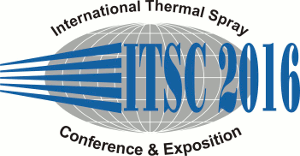
|
5119 |
|
Thermal and mechanical properties of lanthanum zirconate thermal barrier coatings with multi-layer structure in cyclic thermal exposure |
|
Zhe Z. Lu* / Changwon National University, Gyeongnam Sung-Hoon Jung / Changwon National University, Republic of Korea Yeon-Gil Jung/ Changwon National University, Republic of Korea Do-won Song/ Hanyang University, Republic of Korea Jing Zhang/ Indian University-Purdue University , USA Li Li/ Praxair Surface Technologies Inc, USA |
|
Lanthanum zirconate (La2Zr2O7) is very promising material for advanced thermal barrier coating (TBC) application, because it has lower thermal conductivity, greater sintering resistance, and superior high temperature stability than yttria-stabilized zirconia (YSZ). In our previous studies, both single-layer TBC (SLT) and double-layer TBC (DLT) were designed and deposited using blended powders with different mixing ratios of 50:50 and 25:75 in La2Zr2O7 and YSZ, respectively, resulting in a better thermal shock and thermal cycling performance in the DLT. However, the DLT still showed a lower thermal durability comparing to conventional 8YSZ TBC. In this study, multi-layer TBC (MLT) was deposited to further improve the thermal durability with new architecture designs of adding buffer layers between the bond and top coats. The cyclic thermal fatigue (CTF) and thermal shock (TS) tests were conducted at 1100°C, and the effects of the buffer layer and its thickness on delamination or fracture behavior were investigated. MLTs have a better thermal shock and thermal cycling performance than DLTs with blended powders. However, the thermal durability of MLTs is degraded as increasing the number of buffer layer and its thickness near the interface between the bond and top coat, due to the artificial defects and residual stresses, respectively. The findings will help to develop efficient TBC systems for next generation gas turbines. |